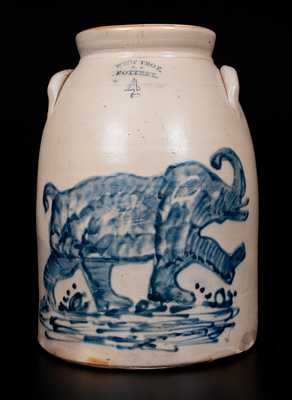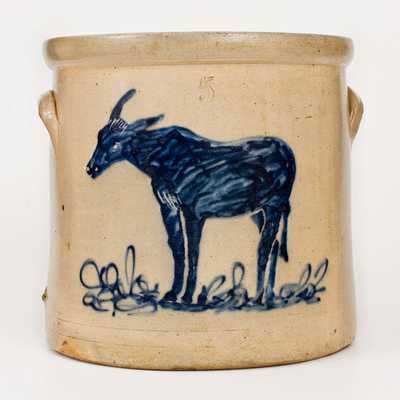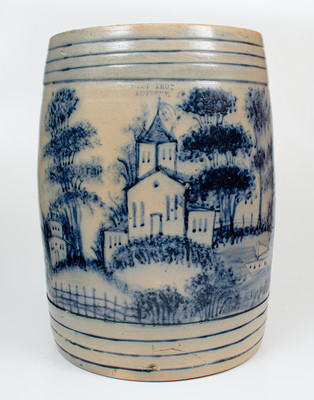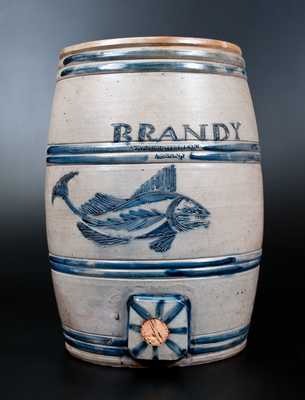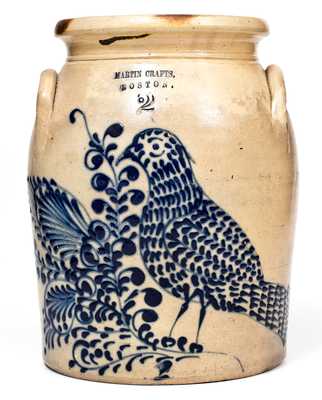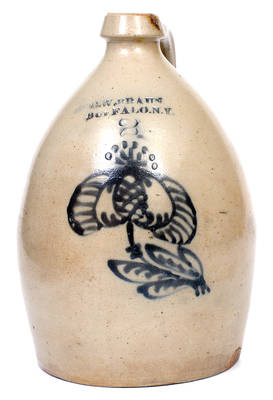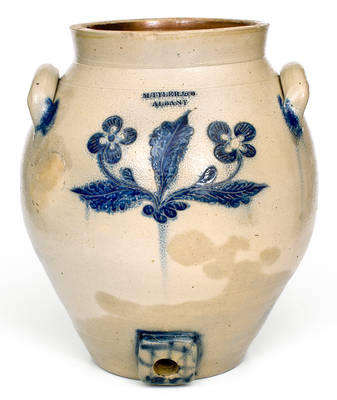Exceedingly Rare and Important Three-Gallon Stoneware Jar with Scalloped Handles and Cobalt Inscription, "Coopers:town," Stamped "PAUL : CUSHMANS," Albany, NY, circa 1812, vasiform jar with heavily-tooled shoulder, flared rim, and arching tab handles with scalloped carving to edges. Body of jar inscribed "Cooper:stown" in large cobalt script. Front of jar features the large maker's mark, "PAUL : CUSHMANS." Brushed cobalt highlights to maker's mark and handles. The village of Cooperstown in Otsego County, New York, was founded by William Cooper (1754-1809), a merchant, developer, and judge, who also served two terms in the United States Congress representing both Otsego County and Central New York. Cooper was also the father of James Fenimore Cooper (1789-1851), well-known author of several works of fiction, including The Last of the Mohicans. William Cooper originally established the town of Cooperstown in 1786 as the "Village of Otsego," as it was built of Otsego Lake. The village was incorporated in 1807, and the name was officially changed to Cooperstown in 1812 after its founder, who had died in Albany in 1809. It is believed that this jar was made to commemorate the renaming of the town and dates to the year 1812. Note the use of a colon between "Coopers" and "town" as seen on the coggled maker's mark, "PAUL : CUSHMANS." Of the town he founded, Cooper once wrote, "This was the first settlement I made, and the first attempted after the Revolution; it was, of course, attended with the greatest difficulties; nevertheless, to its success many others have owed their origin. It was besides the roughest land in all the state, and the most difficult of cultivation of all that had been settled; but for many years past it has produced everything necessary to the support and comfort of man." Today Cooperstown is best known as the home of the National Baseball Hall of Fame and also includes a number of other major museums. This work is the finest example of Paul Cushman stoneware to come to auction in years, featuring a highly-important inscribed decoration, brilliant color, and unusual ornamental handles. Provenance: Christies, Important American Furniture, Folk Art, Silver, and Prints, January 20-21, 2005, lot 288. A thin crack on underside, extending 6 1/2" up body of jar below one handle. Two base chips and a few minor base nicks. Two short, in-the-firing lines to base. A 5/8" chip to side of rim. A minor chip to each handle. Some in-the-firing pings and contact marks to surface, typical of pieces of this age and origin. H 15".






